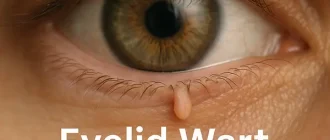If your eye is hurting, you’re not alone. According to the American Academy of Ophthalmology, over 10 million Americans visit the doctor each year due to eye pain. Whether you’re experiencing a sharp pain, a dull ache, or a burning sensation, it’s important to take your eye pain seriously.
The first step is to determine the cause of your eye pain. Common causes of eye pain include dry eyes, allergies, infections, and injuries. If you’re experiencing a sharp pain, it could be a sign of a more serious condition such as glaucoma, iritis, or a retinal detachment.
If you’re experiencing mild eye pain, you can try some home remedies to help alleviate the discomfort. Applying a warm compress to your eyes can help reduce inflammation and soothe the pain. You can also try using artificial tears to lubricate your eyes and reduce dryness.
If your eye pain persists, it’s important to see an eye doctor. An eye doctor can diagnose the cause of your eye pain and recommend the best treatment. Depending on the cause, treatment may include prescription eye drops, antibiotics, or even surgery.
Eye pain can be a sign of a serious condition, so it’s important to take it seriously. If your eye pain persists, don’t hesitate to see an eye doctor. With the right diagnosis and treatment, you can get back to enjoying clear vision and pain-free eyes.
Common Causes of Eye Pain
Eye pain can be a symptom of any number of conditions, from minor irritations to serious medical issues. If you’re feeling eye pain, it’s important to take it seriously and get professional help. Here are the five most likely causes of eye pain:
- Dry eyes: Dry eyes can lead to a burning or stinging sensation in the eyes due to inadequate tear production. Treatment options include artificial tears, warm compresses, or prescribed eye drops.
- Conjunctivitis: Also called “pink eye,” conjunctivitis is an inflammation of the conjunctiva, the thin membrane covering the white of the eyes. It’s usually caused by a virus or bacteria and is highly contagious. Treatment may require antibiotics or antiviral medications.
- Corneal abrasion: A corneal abrasion is a scratch on the surface of the cornea. It can be caused by something like dirt or dust entering the eye, or by rubbing the eyes too hard. Treatment is usually antibiotics, eye drops, or a patch.
- Glaucoma: Glaucoma is a set of eye diseases that damage the optic nerve. It usually arises from increased pressure in the eye. Treatment may include eye drops, laser surgery, or medications.
- Uveitis: Uveitis is an inflammation of the uvea, the middle layer of the eye. It could be caused by an infection, an autoimmune disorder, or an injury. Treatment often involves corticosteroids, antibiotics, or other medications.
If your eyes are hurting, it’s important to take action.
Self-Care Treatment for Eye Pain
If your eye is hurting, it can be a sign of a minor issue or something more serious. It’s important to take the appropriate steps to ensure your eye is properly cared for. Here are some self-care treatments you can try if your eye is hurting:
- Apply a warm compress. Applying a warm compress to your eye can help reduce pain and inflammation. Make sure the compress is not too hot and never use a microwave to heat it.
- Take over-the-counter pain medication. Taking ibuprofen or acetaminophen can help reduce pain and inflammation. Make sure to follow the instructions on the package.
- Avoid rubbing your eye. Rubbing your eye can irritate it further and make the pain worse.
- Use artificial tears. Artificial tears can help lubricate your eye and reduce irritation.
- Wear sunglasses. Wearing sunglasses can help protect your eyes from further irritation.
If your eye pain persists or worsens, it’s important to seek medical attention. Your doctor can help diagnose the cause of your eye pain and provide the appropriate treatment.
See also: Best OTC Eye Drops
When to See a Doctor
If you are experiencing eye pain, it is important to determine the cause and take the appropriate action. Here are some tips on when to see a doctor because of eye pain.
- If the pain is severe or persistent. Severe eye pain is usually a sign of a serious condition and should be evaluated by a doctor. Persistent eye pain that does not go away or gets worse over time should also be evaluated.
- If you experience any vision changes. Blurry vision, double vision, or any other changes in your vision should be evaluated by a doctor.
- If you experience any other symptoms. If you experience any other symptoms such as redness, swelling, discharge, or sensitivity to light, you should see a doctor.
- If you have any underlying medical conditions. If you have any underlying medical conditions such as diabetes, high blood pressure, or autoimmune diseases, you should see a doctor if you experience any eye pain.
If you experience any of the above symptoms or conditions, it is important to see a doctor as soon as possible. Your doctor can diagnose the cause of your eye pain and provide the appropriate treatment.
Conclusion
If your eye is hurting, it is important to take action as soon as possible. Depending on the severity of the pain, you may need to seek medical attention.





